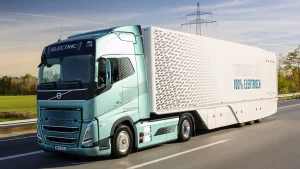
Fleet Electrification: Benefits and Challenges for Heavy-Duty Trucks
Many fleets are opting to switch over to electric vehicles as a cost-cutting measure and to reduce environmental impacts of their trucks.
Electric vehicle conversion will bring numerous economic advantages to local economies by creating jobs in vehicle manufacturing, charging infrastructure development and trucking industries – but it comes with certain challenges to consider.
Benefits
Fleets operating heavy-duty vehicles are discovering numerous advantages from electrification, such as reduced fuel and maintenance costs, an extended driving range, quieter operation, faster charging speeds and greater load capacity.
While these benefits have helped accelerate adoption, other factors continue to hinder it. While EVs remain expensive to buy, fleet managers can reduce upfront costs through government grants like the Commercial Clean Vehicle Credit or state grants. Furthermore, adopting an incremental electrification approach allows fleets to adapt more easily as new battery capabilities and chargers emerge over time.
Challenges
Economic considerations surrounding electric vehicle (EV) fleets can vary significantly, including battery costs and local infrastructure upgrades. To address these concerns, some public entities have implemented interagency coordination arrangements so their procurement and deployment plans take advantage of all funding possibilities available to them.
Charge at Depots A key challenge of transitioning to electric vehicles for many fleets is charging at depots. Not only can this eliminate fuel stops, but fleets can incorporate charging at depots into drivers’ routines by scheduling it during route intervals or overnight at the depot.
Payload capacity issues with current electric trucks may limit their utility for specific vocational uses, such as hauling large equipment. Manufacturers are working on larger battery packs with higher payload capacities to make these trucks more suitable for these tasks; and federal incentives like the Commercial Clean Transportation Voucher help lower upfront purchase prices of these vehicles.
Costs
Initial costs associated with electrifying fleets is an obvious barrier to adoption, yet well-crafted policies can alleviate them in two ways – through organic solutions like setting electricity tariffs that encourage managed charging to minimize fueling costs, and through purchase incentives.
Even with these incentives in place, however, the total cost of ownership remains prohibitive for some fleets. Furthermore, logistical considerations surrounding EV operation can add significant additional expenses:
Fleets that operate according to fixed schedules–like garbage trucks returning overnight–may not be eligible to take advantage of low utility rates by shifting charges depending on time of day. Small fleets frequently purchase used vehicles and thus do not qualify for incentives designed solely to promote new vehicle purchases; this exacerbates economic inequality between large and small fleets that undermines the overall impact of policy goals. To address these concerns, policymakers may wish to extend incentives that support used purchases while also permitting repurposed diesel vehicles as backup.
Support
Fleet operatorss can reduce upfront costs associated with electrification by seeking financial incentives such as tax credits or rebates for commercial vehicle purchases. They can also make this transition simpler by coordinating among departments to ensure fleet electrification is accomplished as cost effectively as possible.
Current technology allows vehicles to travel up to 200 miles on one charge, making this option suitable for many route intervals and destinations. By optimizing depot-based charging practices and working with utilities to establish discounted time-of-use rates that encourage off-peak EV charging, fleets can significantly lower energy use by their trucks.
By reducing greenhouse gas emissions, electric trucks can provide environmental and equity benefits that are especially impactful in low-income communities. RMI estimates that switching public fleets in large freight hub states to electric trucks would prevent 477 premature deaths and 6,194 asthma incidents – amounting to net climate and health benefits worth $5.3 billion! Supporting continued manufacturing of HDEVs here can expand these benefits even further.


